March 18, 2016
We are creeping up the snowbank on our bellies, speaking in the softest whispers, trying to minimize the crunch of our bodies on the snow-crust and the scratchy noise of our REI winter gear. Blue shadows and bright sunlight dazzle the eye.
“Ready for the camera?” I hope that the thin, cold wind doesn’t carry my words down to the little snowbound valley just beyond the crest of the snowbank. Rowan – my autistic son Rowan – nods, takes the camera, and shimmies the last few feet to the ridge. We follow.
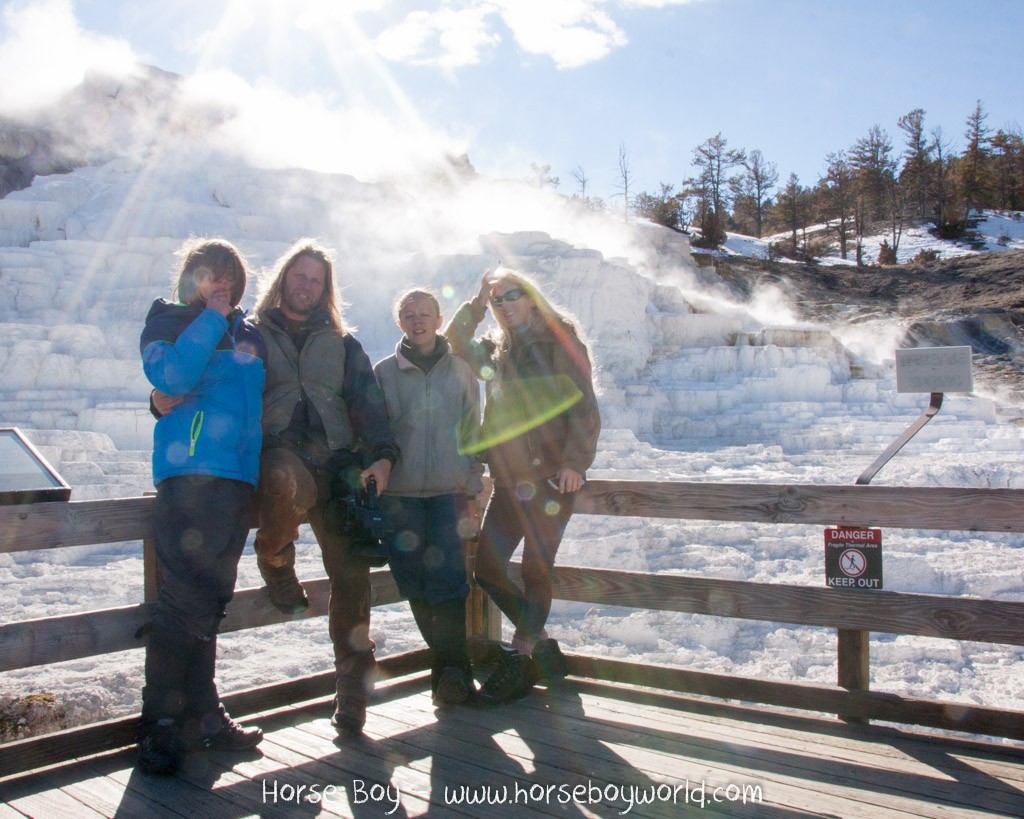
Below us, a bison herd roots at the thick snow, their huge heads like bulldozers, moving the white stuff aside to get at the brown winter grass underneath. If they’re bothered by the whirr of Rowan’s camera, they don’t show it. We’re grateful they aren’t spooked, for along the ridge opposite, above the bison, are what we have come so far to see: the wolf pack, grey and black ghosts moving silent as thought between the tall pines. As Rowan levels the camera again, one wolf, a large male, his blue eyes just visible at this distance, turns and looks right at us. Rowan’s camera snaps the image for posterity.
“Thank you, Mr. Wolf,” Rowan puts the camera down and smiles. “Time for a snack!”
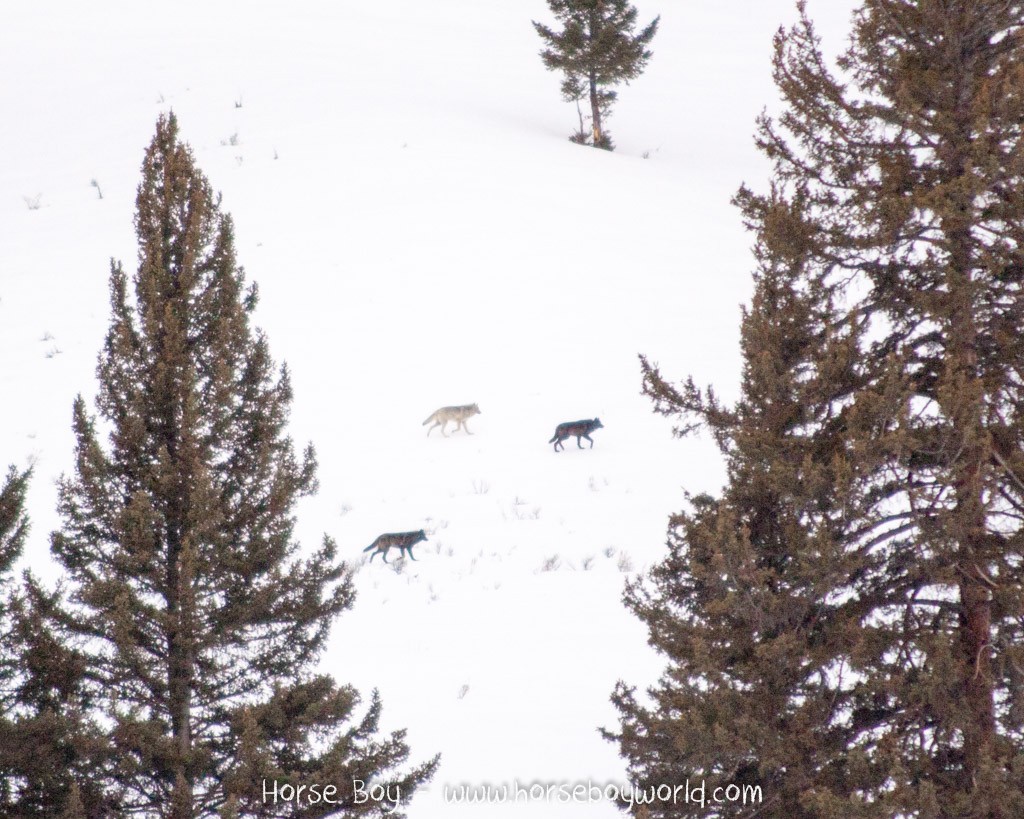
When Rowan was diagnosed back in 2004, I could never have predicted this moment. Non-verbal, endlessly tantrumming to the point of self-harm, unable to toilet train, always the kid that got me the bad stares and the comments out in public . . . . You know the drill. And then something miraculous happened. He met my neighbour’s quarter horse mare, Betsy, and while riding her – the same week that his speech therapists had given up on him – we were riding down towards a large stock tank and a great blue heron got up and flapped away. “Heron,” he said. I damn near fell off the horse. He was talking!
So we began, literally, to live in the saddle together. I’d be like NPR, a voice in his ear; “There’s an oak tree – O-A-K oak. There’s the S-K-Y sky. What is the sky? What is atmosphere? What is oxygen? What is the pulmonary system?” And little by little he’d respond. He didn’t just learn speech up there, he learned to read. I’d paint letters on trees. He loved The Lion King, so while singing all the Lion King songs up there with him, we’d ride to an “S” painted on an elm tree, then an “I” on the next tree, go round the corner of the trail to an “M” and a “B” and then an “A.” And there, at the tree’s foot, would be a little Simba toy waiting for him. So came his literacy. And also his numbers. First counting the footfalls of the horse together, then having friends and family line up in front of us and we’d take one person away, bumping him or her out the way with Betsy’s shoulder, doing it in an evil Godzilla voice with farts on Rowan’s head to make it funny, and then adding the person back, and then charging at the group of four and splitting them into two groups of two while they screamed in mock horror, and then rounding them up again to multiply. So began Rowan’s math. The therapists may have given up on us, but we were doing just fine. Okay, we still had massive tantrums, no toilet training and he still didn’t play with other kids – but this at least was progress! More than that, it was an adventure.
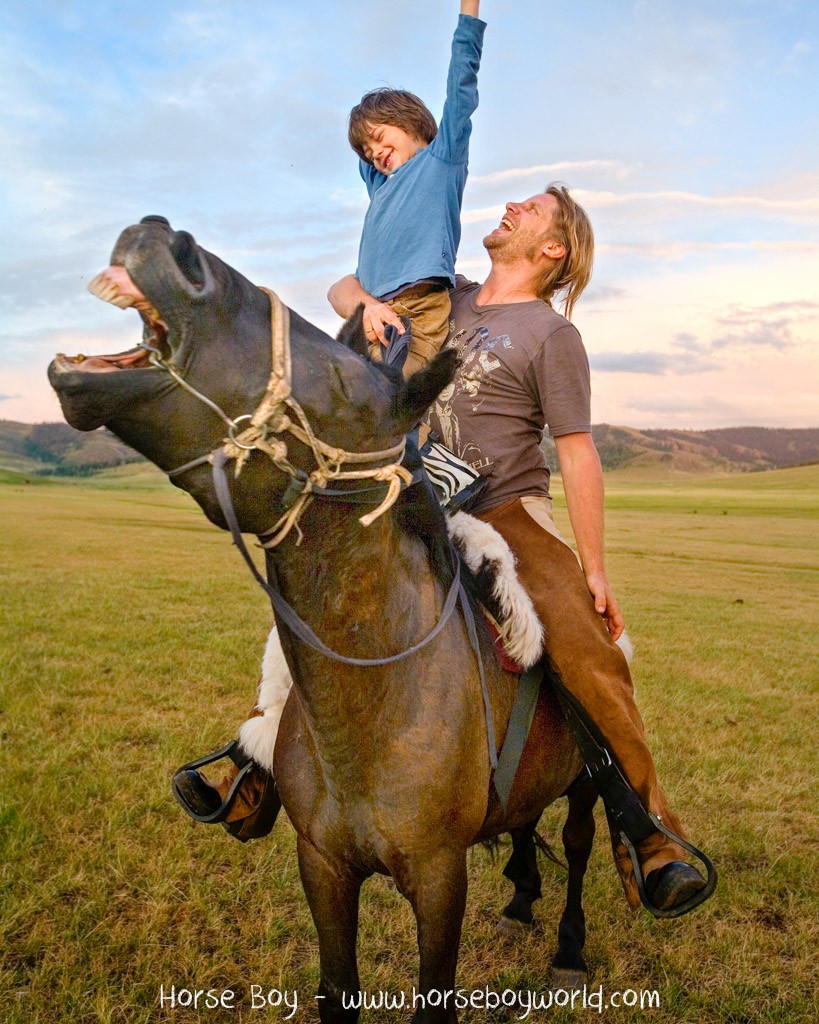
Horseboy Rowan.
I also noticed some things – I’m a born noticer, observer; my day jobs of journalist and horse trainer require it. In both professions, you have to notice a lot of detail, a lot of what people don’t say, or rather what they show you – animals too – with their body language. So before Rowan met Betsy, I had observed that he simply did better outside on the trails behind the house. Fewer tantrums, more engagement. Moreover he was clear that he wanted to go outside all the time – going to the door and thumping on it. So I followed his lead. It had been Rowan that had taken me to Betsy, even. Despite being a lifelong horseman, I had actually kept Rowan away from horses, assuming that his uncontrollable behavior would make being around them dangerous. I had even stopped riding, which is never a good idea for me, suffering from depression as I do. Horses are the most important thing in my life, after family. So for me to stop riding while dealing with the stresses of early autism . . . let’s say I was in a negative spiral.
But one day, completely on his own volition, Rowan darted through the undergrowth, away from the main trail, to Betsy, and threw himself under her feet, laughing. The connection between them was palpable, direct, and he had wanted to go back day after day – showing me by simply going there while I followed. At the time, his desire to go to Betsy had seemed very sudden, but on reflection I realized that he had probably been checking her out for weeks as we walked the trails, before he was ready to make his move. If I hadn’t been observing his desire to be on those trails, following him, might I have missed this life-changing event? Might it have never happened?

I also noticed that when Rowan simply lay body-to-body on Betsy, all his stimming – all his agitation – would simply go away. He was calm, present, in a way he usually never was. And when we rode together, almost all the speech and learning came when the horse was in a very balanced, collected trot or canter, and almost never when I just led Betsy at a walk by her head. I didn’t yet know why, but I noticed . . . .
Then came what seemed to me a logical idea, but what to everyone around me seemed completely crazy. Rowan had this radical and positive outcomes from being on the Betsy in these hip-rocking rhythms out in nature. Be he also had an amazing reaction to something else. To understand that something else you need to know a little about my family background.
I’m British, born in London (though settled in Texas). But my family is African – South Africa on my mother’s side and Zimbabwe on my dad’s. As a journalist, it had been natural for me to gravitate down there to cover stories, and over time I had drifted from reporting into human rights advocacy, helping displaced hunter-gatherer tribes get legal title to their ancestral land. The same year that Rowan was diagnosed and met Betsy, I had to bring a delegation from one of the groups I advocated for to the United Nations and U.S. State Department. Some of those on the delegation were trained healers, or shamans, in their own culture. They met Rowan, offered to “work” on him a little with prayer, going into trance, and laying hands on to heal as is their tradition. I said “sure.” I was familiar enough with the procedure, having witnessed it on my grandfather’s farms in Zimbabwe since I was seven years old. More recently, in the Kalahari with the tribes I worked with, and where people get sick and often don’t have much access to Western medicine, I had seen people recover using these non-intrusive methods. The worst thing that could happen was nothing, right? However, while with them, Rowan dramatically shed some of his more obsessive symptoms. It didn’t last long, but I couldn’t think: okay, radical and positive reaction to the horse . . . radical and positive reaction to these healers . . . . Where is there a place that combines those two things? Mongolia. The horse as we know it comes from there; strong system of shamanism there too. Gut feeling: gotta go.
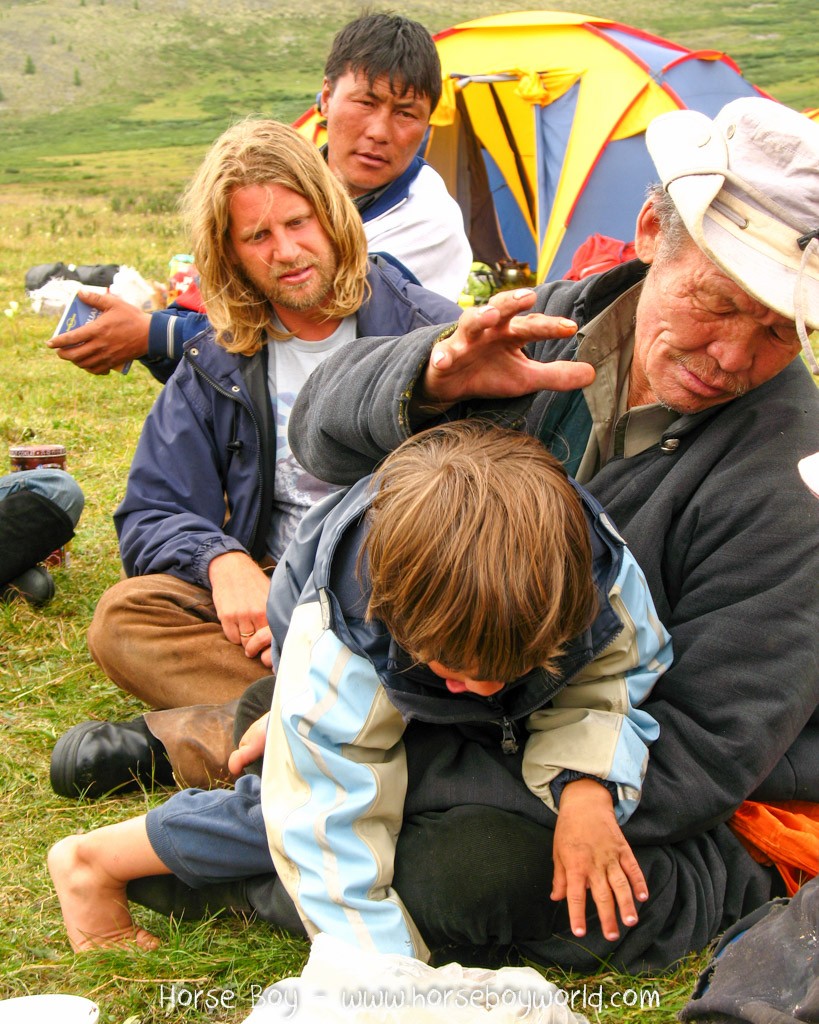
So unfolded the journey and story that many people know as the book and film The Horse Boy. We went out to that remote land, riding horseback from healer to healer with a son who was autistic, and we came back with a son who was still autistic. But his three key dysfunctions – his incontinence, his tantrumming, and his inability to make friends – these he left behind in Mongolia. He came back this very functional autist. Think junior Temple Grandin.
But the last shaman to work on him – Ghoste, a shaman of the reindeer people of southern Siberia – warned me that for the healing to stick, to be confirmed, I would have to do three more journeys to three more shamans over the next three years. It didn’t have to be back to him, but I had to make the journeys. My heart sank a little, daunted by all the effort, time, and expense it would involve. But my gut told me to follow through. So began to the story told in The Long Ride Home, which has just been published in the USA.
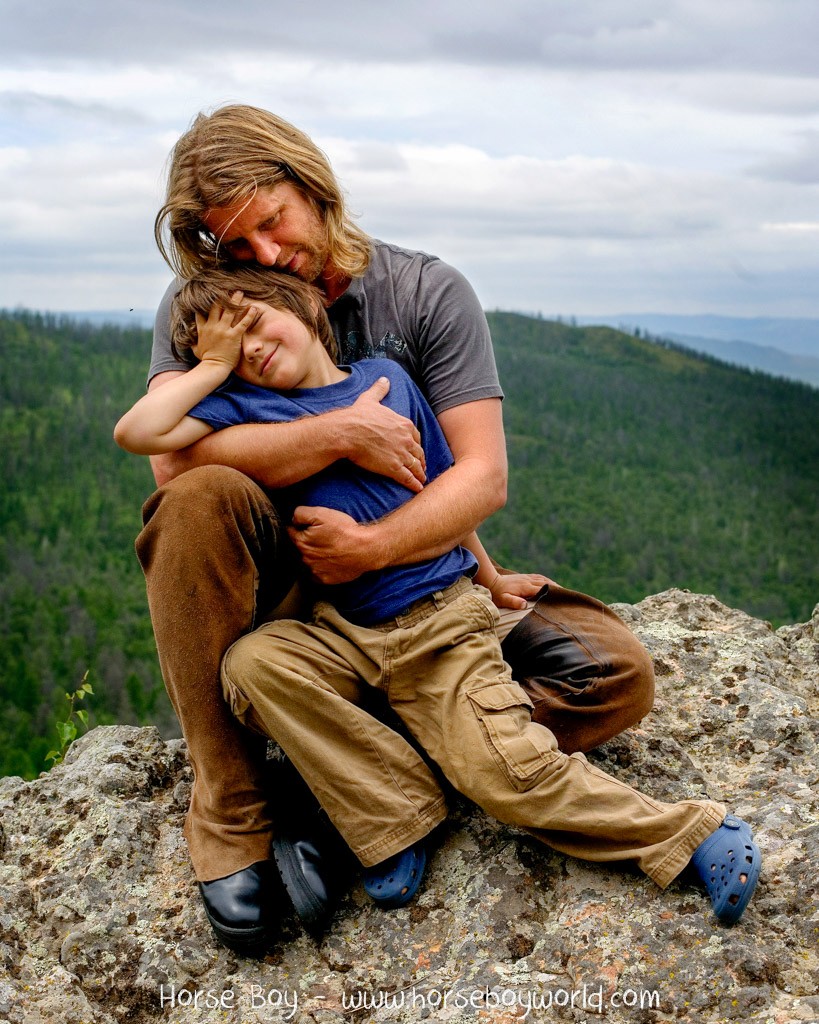
Horseboy Rowan.
Over three successive summers, we travelled to Africa, to Namibia where the same Bushman healers I had worked with as a human rights advocate danced and prayed over us under the bright Kalahari stars. What resulted from that was a mathematical dialogue in Rowan that had not been there before. The following year we were in the rainforests of Australia with a Kuku Yalanji aboriginal shaman deep in the Daintree Rainforest, whose healing was frankly and literally mind-blowing – it’s described in detail in The Long Ride Home, but suffice to say it challenged, utterly, my perceptions of reality. Almost immediately Rowan began demonstrating Theory of Mind, playing pranks on me that required a level of perspective taking he hadn’t displayed before. The final summer, the last of the healings took place on the Navajo Reservation in Arizona, with a legendary healer there called Blue Horse. The day after that healing, Rowan dropped his scripted, sing-song speech and began proper, non-scripted conversation. Do I fully understand what went on in these healings? No. Were the results astonishing? Absolutely.
So am I saying that if you have an autistic kid you should ride a horse with them and go see a shaman? No, of course not: these things were personal to me and Rowan, our family background, and time and place. But am I saying that if you have an autistic child – any child – should you follow that child, observing what they love to do and doing it with them, getting into nature, away from bad sensory triggers, and smothering them in a universe of unconditional love? You bet I am.
And letting them move, move, move. Remember how I had noticed that it was specific, rhythmic, rocking and balancing movements that had seemed to open Rowan to learning? By the time we did the Navajo healing, we had been home schooling for five years, learning gradually how to adapt the K-12 national core curricula to be done in the forest, the water, and on the trampoline, not just on the horse. During the years of those healings, I had also started a center at my home in Austin Texas offering equine adventures and time in nature with animals to other autism families, and we had noticed pretty much universal results. The kids just flat-out learned when they were with us, especially when we fed them information during these rocking, balancing movements.
We wanted to find out why. It helped that Rowan’s mother is Dr. Kristin Neff, professor of developmental psychology at the University of Texas: we had access to a lot of neurologists, educational psychologists and the like. And also through my other family many of whom are research doctors (Google my uncle, Dr. Peter Isaacson, if you want an example of how deeply ingrained hard science is in our family). All seemed to agree that we were getting our results because these movements were probably filling the kids’ bodies with oxytocin, the hormone of happiness and communication, which was calming the kids’ overactive nervous systems, and cancelling out the cortisol or stress hormone created by their overactive amygdalas, the fight/flight/freeze center of the brain, which is often over-stimulated in autists and others with neuro-cognitive conditions.
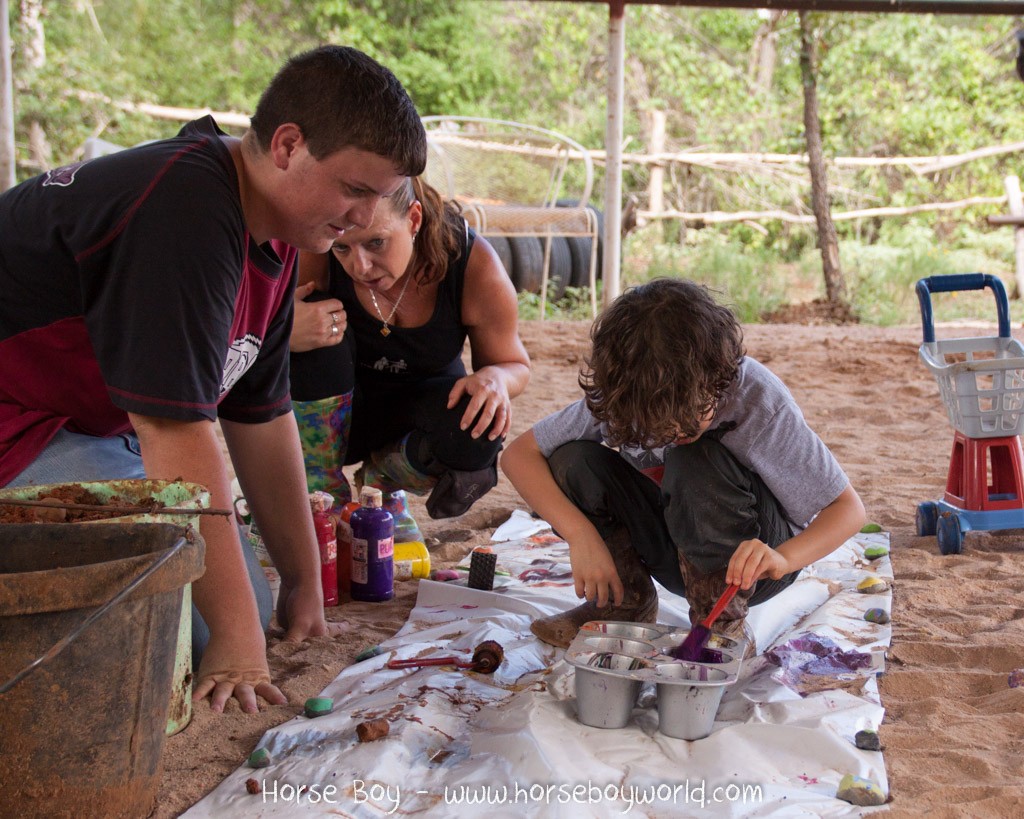
But there was more – these movements were activating the cerebellum and causing it to produce the oddly named Purkinje cells, which create the circuits within the brain that get the different parts of the brain communicating properly with each other and which are often lacking in autistic brains. That in turn was firing up the prefrontal cortex – the brain’s center for reasoning and emotional regulation – and finally the vestibular system was being activated too, which governs balance, but more importantly attention. So the kids were being put in the ideal position to receive information, but more importantly to retain, to keep it. Teaching while doing this kind of movement outside on a horse or on play equipment was getting us results in spades.
It also turns out that these kinds of rocking and balancing movements cause the brain to produce something called BDNF – brain-derived neurotrophic factor – a protein that acts as a kind of Miracle-Gro for the brain, making it produce millions of neurons. There’s a link here to dementia, also ADD and general ed for neurotypicals: force kids to sit still and learn by rote, or old people to simply sit, and you slowly but surely kill the brain’s capacity for learning until it atrophies.
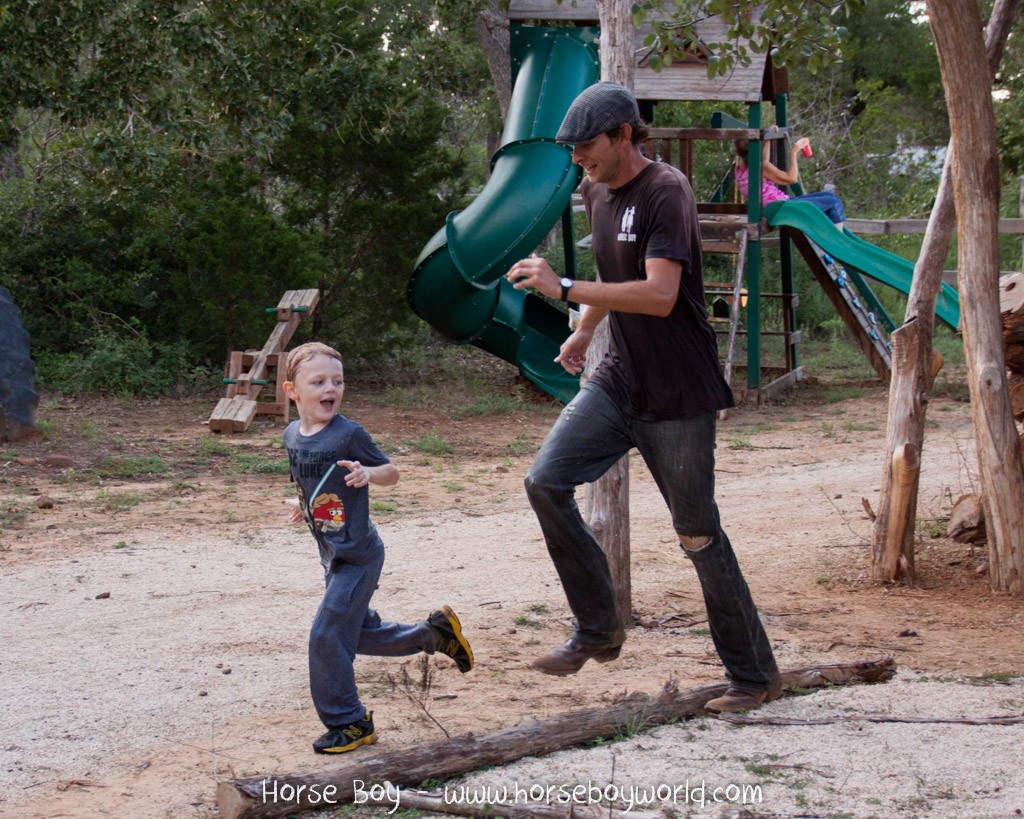
So, thanks to Rowan and the other kids we worked with, were born two ways of working: Horse Boy Method, an equine therapy aimed specifically at neuro-cognitive conditions; and Movement Method, a kinetic learning technique that teaches the K-12 curriculum for homeschoolers and classrooms alike. Both are now in 13 countries and rising. At our home center in Austin, all our services for local families – within 150 miles – are completely, 100% free.
Meanwhile Rowan has started his own web-based television series called Endangerous Safaris – an ecology project following animals that are both endangered and dangerous, with a liberal splash of toilet humor: tracking bears in Romania, orcas off the San Juan Islands, black rhinos in Namibia and wolves in Yellowstone. You can see the episodes he has created so far here – www.endangeroussafaris.com – and the newly published The Long Ride Home tells the story of how all this happened, and where this blog began – crawling up the snowbank in Yellowstone to photograph the wolves was him capturing footage for the latest episode.
After so many journeys, so many discoveries, it feels we are only now just at the real beginning. As anyone reading this knows, there are so many moving parts to autism: there isn’t the time here to also go into the nutritional aspect of what we did for Rowan, the supplement side – and there are many, many excellent bloggers on Thinking Moms who are much more knowledgeable in these regards than we will ever be. But knowing how movement affects the brain, the importance of nature both for sensory issues and brain development, and the need – as all readers will agree – for unconditional love and acceptance, whether that is something shamanic, a relationship with a horse, or simply the unbounded love that all readers here have for their children – these things are not what the neurologists and therapists tell us at the outset of our autism adventure. They are what we find if we listen to our best mentors – the kids themselves.
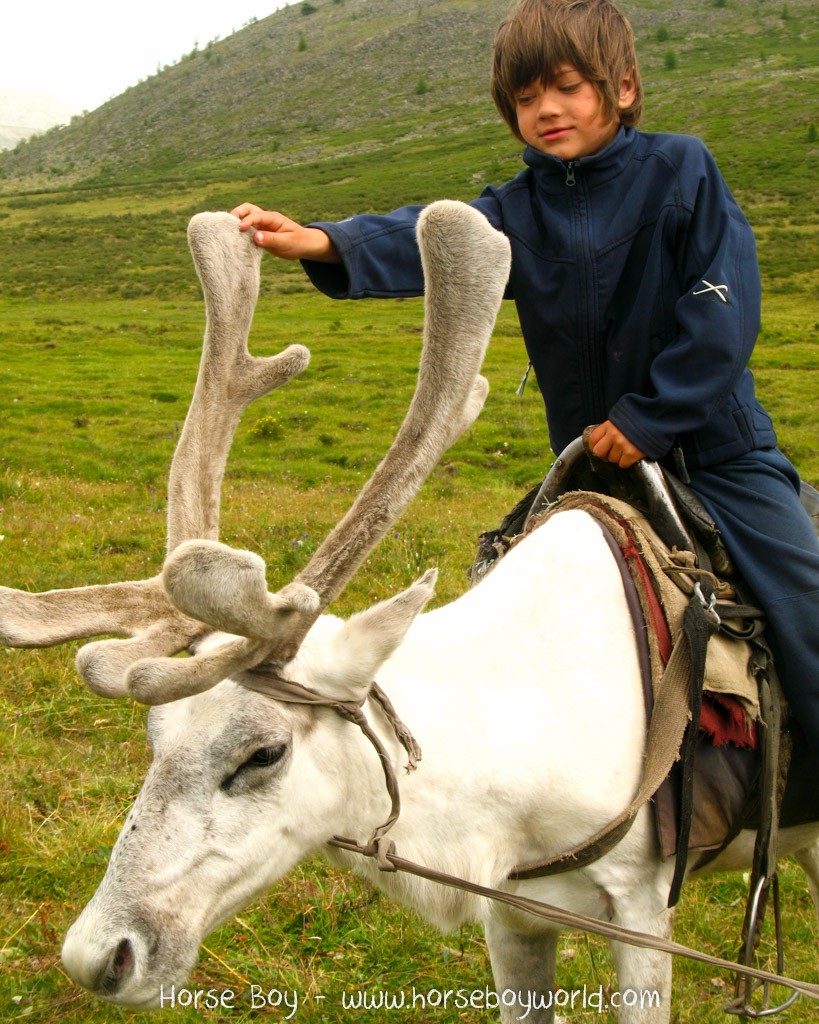
It has indeed been a Long Ride Home. Now the real adventure into autism’s many gifts can begin in earnest. Will these extraordinary kids, with their supra-natural memories, innovative intellects and almost stunning lack of ego (to name but a few gifts of autism), change our species for the better? Will business, politics, ecology, human relations in general, look exponentially brighter in thirty years as all these incredible children – these dream whisperers – come of age and become the leaders of tomorrow? I have a hunch that they will, and we, dear readers, all have a front row seat as we watch that process unfold.
Here’s to the future.
~ Rupert Isaacson
Rupert Isaacson’s book The Long Ride Home is published by Horse Boy Press and is available at www.thelongridehomebook.com. All proceeds go to help autism families get services free of charge.
The Horse Boy Foundation’s services can be discovered at www.horseboyfoundation.org.
And for those interested in Movement Method’s kinetic learning, whether for the home or classroom: www.kidsmustmove.com.
Rupert is currently on book tour with Dr. Temple Grandin, with whom he collaborates directly on the Movement Method curricula. Catch them next in Westminster, CO, on April 11th, with more dates to be announced soon.

















“The Horseboy” is a fascinating and very well-written book - and I read it a second time at the moment. When I looked for more information I came across this page and found you published a second book. I myself won’t have problems to read it in English but know there are more people who are interested but only understand German. Is there any chance that this book will be translated to German like The Horseboy?
I am happy to read here that everything turned out so well for Rowan, you and your family and that you are able to help also other children. All the best for the future!
Eva
I liked the book very much.
The name Besa did me think of this:
Besa is an Albanian cultural precept, usually translated as “faith”, that means “to keep the promise” and “word of honor”.[1]
Besa during World War II
Besa also means taking care of those in need and being hospitable. During World War II, Albanians saved over 2000 Jews from Nazi persecution.[2] Rather than hiding the Jews in attics or the woods, Albanians gave them clothes, gave them Albanian names, and treated them as part of the family. The concept of besa is incorporated into their culture. Before World War II only about 200 Albanians were Jewish. At the end of the war about 2000 Jews were living in Albania. An award-winning feature film documentary BESA: The Promise (2012) is about American photographer Norman H. Gershman’s quest to tell the story of Besa and the Albanians who saved Jews during World War II. This story was featured on CBS News Sunday Morning on November 8, 2009 for the 71st anniversary of Kristallnacht, which occurred on November 9, 1938.[3]
I don’t know if you had heard from this.
My best wishes to all of you.
Jannie Bloed
Came to your post from Iris Grace Painting. This fascinates me and inspires me. Can’t wait to read/research more.